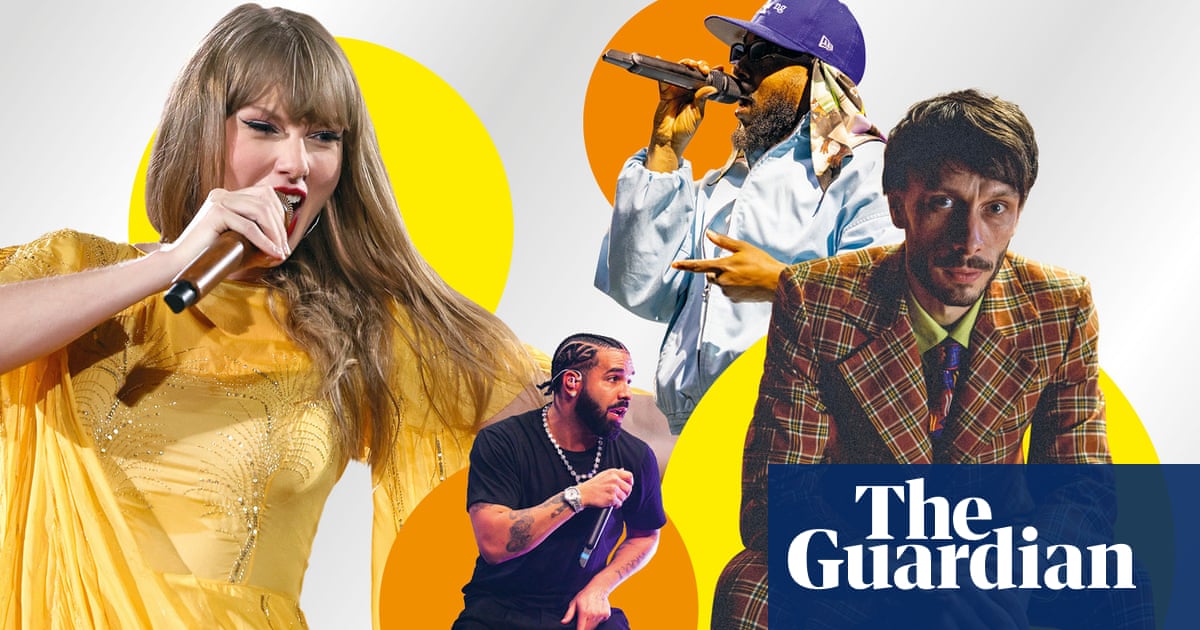
Katy Perry, Lady Gaga, Beyoncé, Taylor Swift, Billie Eilish, Charlie XCX, Olivia Rodrigo: over the past decade, there has been a boom in documentaries about female pop stars. These glossy, behind-the-scenes films promise to share an unfiltered and authentic look at “the real them”, often centred around a tour or the recording of a new album. The rich lineage of the music doc is well-documented, but it has recently become a lucrative tool, one that serves as promotional material and supplementary art in the same breath.
Jennifer Lopez is the latest star to release a film. After more than three decades in show business, Halftime feels like a more intriguing prospect than some of the recent concert tie-ins to feature J-Lo’s juniors. The film, directed by Amanda Micheli, focuses primarily on the run-up to Lopez’s performance at the 2020 Super Bowl and covers Lopez narrowly missing out on an Oscar nomination for her lauded performance in Lorene Scafaria’s 2019 film Hustlers. Lopez’s reasons for releasing a documentary are understandable: her three-decade career has been mired by professional and personal criticism. “For my whole life I’ve been battling to be seen, to be heard, to be taken seriously,” she says in Halftime.
Women in music frequently face difficulty in being taken seriously as artists. Such documentaries give stars the opportunity to control their image and choose how much of themselves to share with audiences. Of course this trend isn’t restricted to women. Justin Bieber and One Direction’s mid-10s concert documentaries promised viewers a look at their idols as they had never seen them before. Fans piled into cinemas.
But for female musicians, particularly those working in the often belittled world of pop music, documentaries can be a powerful tool for regaining narrative control. When Katy Perry released Part of Me, the film that accompanied her mammoth, 124-date world tour, she was battling health problems and in the middle of a painful divorce from Russell Brand. These personal tribulations are captured alongside footage of Perry preparing for performances, emphasising the gruelling nature of her rigorous tour schedule. After the film’s release, many expressed admiration for Perry, and the film was praised for its candour.
Similarly, Lady Gaga’s Five Foot Two and Taylor Swift’s Miss Americana charted specific creative periods in their subjects’ lives. For Swift – long regarded as America’s sweetheart – it was a chance to set the record straight, after scandals involving Kanye West and Kim Kardashian, and repeated accusations that her muted stance on political issues emboldened her rightwing fans. Miss Americana covers family illness, Swift’s highly publicised sexual assault trial and her relationship with body dysmorphia. It is a clever piece of propaganda, regardless of its sincerity – Swift notes her immense privilege as one of the most beloved musical artists of the millennium, but also seems keen to situate herself as the girl-next-door who just happened to make it to the A-list.
For younger stars such as Billie Eilish, Olivia Rodrigo and Charlie XCX, a behind-the-scenes documentary can be a savvy introductory tool, as well as a way to offer die-hard fans carefully curated insights into their lives. XCX’s Alone Together documented the process of creating a collaborative album during the Covid-19 pandemic, highlighting her DIY origins as well as the power of online community. Billie Eilish’s The World’s a Little Blurry examines her rapid rise to fame, and captures the strangeness of being one of the most famous people on the planet when you’re barely an adult.
Inevitably, the content of these documentaries is carefully controlled. The nature of intimate access is that the subject will likely have some say in what is or isn’t included, and will strive to create a film that prioritises their public image over honesty or artistic flair. These films can often feel more like an extended PR exercise than an access-all-areas pass. Documentaries are often thought of as an extension of journalism, which ought to retain editorial independence even while granted intimate access. But when a filmmaker is hired specifically by a star to create a film about them, does this relationship become warped? In 2020, the Columbia Journalism Review published a piece about the celebrity documentary boom more widely, and suggested the documentary form was at odds with the content – these films do not exist to hold their subjects to account, or really interrogate the narrative they’re putting across. Perhaps we’re moving toward a new hybrid form – the “pop doc” is neither pure, independent documentary nor complete fiction.
Even if they are heavily stage-managed, there’s something valuable in these pop docs. It can be just as illuminating to notice what a subject chooses to leave out as that which they choose to include. Lopez doesn’t mention her relationship with Alex Rodriguez, whom she broke up with in April 2021. Halftime might serve to further her narrative as a self-made pop icon, but it’s also a savvy piece of pop culture mythology. And it’s enticing to watch a global superstars in their more vulnerable moments – so long as audiences remember they are always – in one sense or another – watching a performance.
Hannah Strong is digital editor at Little White Lies












